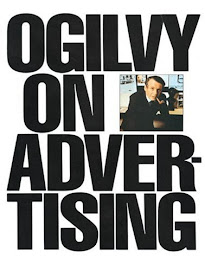
The 22 Immutable Laws of Branding
by: Al Ries & Laura Ries
1. The Law of Expansion: The power of a brand is inversely proportional to its scope. Trying to be all things to all people undermines the power of the brand. The strength of brands lies in becoming synony-mous with a single category. Brands that spread themselves across categories lose brand focus, identity, and ultimately market share.
2. The Law of Contraction: A brand becomes stronger when you narrow its focus. By narrowing the focus to a single category, a brand can achieve extraordinary success. Starbucks, Subway and Dominos Pizza became category killers when they narrowed their focus.
3. The Law of Publicity: The birth of a brand is achieved with publicity, not advertising. A new brand must be capable of generating favorable public-ity in the media or it won't have a chance in the marketplace. Anita Roddick built the Body Shop into a global brand with no advertising, but with massive amounts of publicity. On the other hand, Miller Brewing spent $50 million in advertising to launch a brand called Miller Regular. The brand generated no publicity and very little sales.
4. The Law of Advertising: Once born, a brand needs advertising to stay healthy. Sooner or later, a brand leader has to shift its branding strategy from publicity to advertising. By raising the price of admission, advertising makes it difficult for a competitor to carve out a substantial share of the market.
5. The Law of the Word: A brand should strive to own a word in the mind of the consumer. If you want to build a brand, you must focus your branding efforts on owning a word in the prospect's mind. A word that nobody else owns. Kleenex owns "tissue," Federal Express owns "overnight," Volvo owns "safety."
6. The Law of Credentials: The crucial ingredient in the success of any brand is its claim to authenticity. Coke is the real thing in the minds of many, even though the last "real thing" advertisement ran almost thirty years ago. A brand's credentials in a category as authentic, real, original, or the leader are very powerful indeed.
7. The Law of Quality: Quality is important, but brands are not built by quality alone. Does a Rolex keep better time than a Timex? Does Hertz have better service than Alamo? Does a Montblanc pen write better than a Cross? Are you sure? The perception of quality, more than quality itself, is what builds a brand. And the best way to build a quality perception in the mind of consumers is by following the laws of branding.
8. The Law of the Category: A leading brand should promote the category, not the brand. The most efficient, most productive, most useful aspect of branding is creating a new category. Customers don't really care about new brands, they care about new categories. What was the market for cheap cars before Volkswagen? What was the market for home pizza delivery before Dominos? What was the market for in-line skates before Rollerblade?
9. The Law of the Name: In the long run, a brand is nothing more than a name. In the short term, a brand needs a unique idea or concept to survive. But in the long term, all that is left is the difference between your brand name and the brand names of your competitors. Shorter names that are unique and memorable are far stronger than longer, vague or generic names.
10. The Law of Extensions: The easiest way to destroy a brand is to put its name on everything. More than 90% of all new product introductions in the U.S. are line extensions. Line extensions destroy brand value by weakening the brand. The effects can be felt in diminished market share of the core brand, a loss of brand identity, and a cannibalization of the one's own sales. Often, the brand extension directly attacks the strength of the core brand. Does Extra Strength Tylenol imply that regular Tylenol isn't strong enough?
11. The Law of Fellowship: In order to build the category, a brand should welcome other brands. Consumers want to have choices. Choice stimulates demand. Healthy competition helps to build the category. The competi-tion between Coke and Pepsi makes customers more cola conscious. Per capita consumption goes up.
12. The Law of the Generic: One of the fastest routes to failure is giving a brand a generic name. The problem with a generic brand name is its inability to differentiate the brand from the competition. At your local health food store, you'll find Nature's Resource, Nature's Answer, Nature's Bounty, Nature's Secret, Nature's Way, Nature's Best, Nature's Plus, etc. Will any of these generic brands break into the mind and become a major brand? Unlikely.
13. The Law of the Company: Brands are brands. Companies are companies. There is a difference. Customer's think of brands, not companies. Procter and Gamble isn't Tide. General Motors isn't Cadillac. The brand itself should be the focus of your attention. Use the company name, if necessary, in a decidedly secondary way.
14. The Law of Subbrands: What branding builds, subbranding can destroy. Subbranding erodes the power of the core brand. Waterford is the leading Irish crystal maker. Introducing "cheap" Waterford as "Marquis by Waterford" only dilutes the Waterford brand. Subbranding attacks a brand's place in he mind of the prospect.
15. The Law of Siblings: There is a time and place to launch a second brand. A second brand can be launched to focus on a new subcategory within the same product family. Toyota launched Lexus because the Toyota brand couldn't fill the luxury ar category. The focus is on the brand, not the company. Customers buy a Lexus not because it's made by Toyota, but in spite of it.
16. The Law of Shape: A brand's logotype should be designed to fit the eyes. Both eyes. A customer sees the world through two horizontal-ly mounted eyes peering out of the head. For maximum visual impact, a logotype should have a horizontal shape. The ideal shape is 2 1 /4 units wide by 1 unit high.
17. The Law of Color: A brand should use a color that is the opposite of its major competitor. Coke is red, and Pepsi is Blue. Hertz is yellow, and Avis is Red. Color consistency over the long term can help a brand burn its way into the mind.
18. The Law of Borders: There are no barriers to global branding. A brand should know no borders. The perfect solution to growth in a competitive market is not line extensions, but building a global brand. A brand should have a consistent message globally, but must take into account the perceptions of its country of origin.
19. The Law of Consistency: A brand is not built overnight.Success is measured in decades, not years.This is the law which is violated most frequently. Once a brand occupies a position in the mind, the manufacturer often thinks of reasons to change. Markets may change, but brands shouldn't. They may be bent slightly, or given a new slant, but their essential characteristics should never be changed. Long-term, consistent programs might be boring, but they are also immensely powerful.
20. The Law of Change: Brands can be changed, but only infrequently and only very carefully. Nothing is absolute and there are exceptions to every rule. There are three situations where changing your brand is feasible: When your brand is weak or non-existent in the mind, when you want to move your brand down the food chain to a lower price and perception point, or when your brand is in a slow-moving field and the change is going to take place over an extended period of time. Remember, changing your brand is a long and difficult process. Change at your own risk!
21. The Law of Mortality: No brand will live forever. Euthanasia is often thebest solution. While the laws of branding are immutable, brands themselves are not. They are born, grow up, mature, and eventually will die. Yet companies that are willing to spend millions to save a dying brand, won't spend pennies to launch a new one. Opportunities for new brands and threats to old ones are constantly being created by the invention of new categories. The rise of personal computers created opportunities for Compaq, Dell and Gateway, but put pressure on Digital, Data General and Wang.
22. The Law of Singularity: The most important aspect of a brand is its single-mindedness. What is a brand? A singular idea or concept that you own inside the mind of the prospect. It's as simple or as difficult as that.
Excerpted from "The 22 Immutable Laws of Branding"
 i've been wondering about it and this is pure speculation on my part (or if this was a report done by an account manager, it is called "competitive ad analysis") - why did URC's hunt's pork & beans rice vs bread tv ad suffer a fatal flaw?
i've been wondering about it and this is pure speculation on my part (or if this was a report done by an account manager, it is called "competitive ad analysis") - why did URC's hunt's pork & beans rice vs bread tv ad suffer a fatal flaw?



 aside from being an intellectual genius, he is also a marketing genius.
aside from being an intellectual genius, he is also a marketing genius. 
































